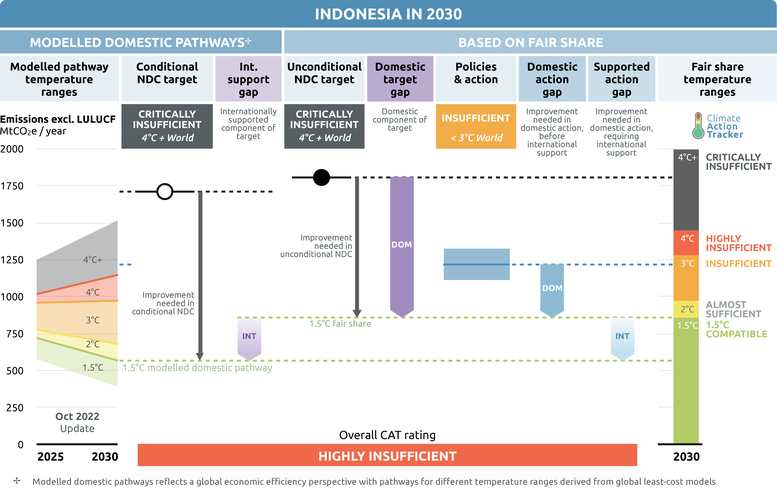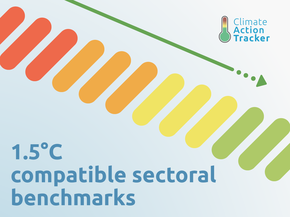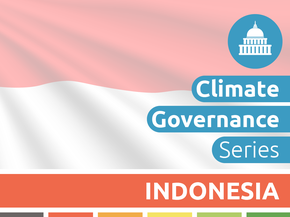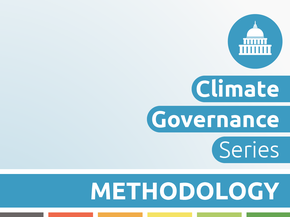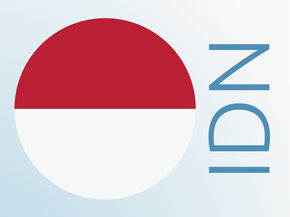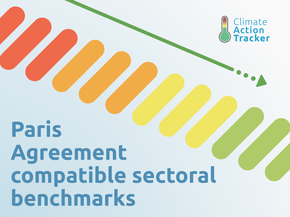Targets
Target overview
On 23 September 2022, Indonesia submitted its enhanced NDC to the UNFCCC. This update increased the unconditional target from 29% to 32% below the business-as-usual scenario (BAU), and the conditional target from 41% to 43% below BAU, including emissions from land use, land use change and forestry (LULUCF). Excluding the LULUCF emissions, this translates to an unconditional target of 1805 MtCO2e and a conditional target of 1710 MtCO2e in 2030. The CAT rates both Indonesia’s conditional NDC target against modelled domestic pathways and its unconditional NDC target against fair share as “Critically insufficient”.
The updated NDC links to the long-term strategy (LTS), submitted with Indonesia’s 2021 NDC update. Indonesia has not yet communicated an explicit net zero target but explores scenarios that could lead to net zero by 2060 or sooner in its LTS. The country also commits to considering the LTS in the formulation of broader development planning documents and subsequent NDCs.
| INDONESIA — Main climate targets |
|---|
| 2030 unconditional NDC target | |||
|---|---|---|---|
| Formulation of target in NDC | Reduce emissions by 32% against the 2030 BAU. | ||
|
Absolute emissions level in 2030 excl. LULUCF |
1805 MtCO2e [468% above 1990] [150% above 2010] |
||
| Status | Submitted on 23 September 2022 | ||
| 2030 conditional NDC target | |||
|---|---|---|---|
| Formulation of target in NDC | Reduce emissions by up to 43% against the 2030 BAU. | ||
|
Absolute emissions level in 2030 excl. LULUCF |
1710 MtCO2e [438% above 1990] [136% above 2010] |
||
| Status | Submitted on 23 September 2022 | ||
| Net zero & other long-term targets | |||
|---|---|---|---|
| Formulation of target | Through the long-term strategy – low carbon and climate resilience scenario (LTS-LCCR 2050) – Indonesia will increase ambition on GHG reduction by achieving the peaking of national GHG emissions in 2030 with a net sink of forest and land-use sector, reaching 540 MtCO2e by 2050, and with further exploring opportunity to rapidly progress towards net-zero emission in 2060 or sooner. | ||
|
Absolute emissions level in 2050 excl. LULUCF |
848 MtCO2e [166% above 1990] [19% above 2010] |
||
| Status | Submitted on 22 July 2021 | ||
NDC updates
Indonesia submitted its enhanced NDC to the UNFCCC on 23 September 2022. While numerically stronger, it can still be easily met with current policies and will not drive further climate action. We therefore do not consider Indonesia's target to be stronger than the previous one.
The 2022 NDC increased the unconditional target from 29% to 32% below its business-as-usual scenario (BAU), and its conditional target from 41% to 43% below its BAU, including emissions from land use, land use change and forestry (LULUCF).
Indonesia’s relative reductions below BAU are not as ambitious as they sound, for two reasons. First, Indonesia aims to meet a large share of its commitments through emission reductions in the forestry sector. The sector is expected to contribute with almost 60% of the emissions reductions necessary to meet both conditional and unconditional NDC targets. This means that other sectors will see substantially lower relative reductions below BAU. Second, the BAU used in the NDC projects emissions that are substantially above current policy projections.
Indonesia will likely achieve its targets (excl. forestry) without any additional efforts, while almost doubling today’s emissions.
| INDONESIA — History of NDC updates | First NDC | 2021 NDC update | 2022 NDC update |
|---|---|---|---|
| 1.5°C compatible |
|
|
|
| Stronger target* | N/A |
|
|
| Economy-wide coverage |
|
|
|
| Fixed/absolute target |
|
|
|
*While Indonesia’s 2022 NDC is stronger on paper, it still leads to emissions levels above current policies and will not drive additional climate action. We therefore do not consider it an increase in ambition.
| INDONESIA | First NDC | 2021 NDC update | 2022 NDC update |
|---|---|---|---|
| Formulation of target in NDC |
Unconditional target: Indonesia has committed to reduce unconditionally 29% of its greenhouse gasses emissions against the business as usual scenario by the year of 2030. Conditional target: Indonesia could increase its contribution up to 41% reduction of emissions by 2030, subject to availability of international support for finance, technology transfer and development and capacity building. |
Unconditional target: Indonesia has committed to reduce unconditionally 29% of its greenhouse gasses emissions against the business as usual scenario by the year of 2030. Conditional target: Indonesia could increase its contribution up to 41% reduction of emissions by 2030, subject to availability of international support for finance, technology transfer and development and capacity building. |
Unconditional target: The Enhanced NDC increases Indonesia’s unconditional emission reduction target to 31.89%, compared to 29% in the 1st NDC. Conditional target: Indonesia can increase its contribution up to 43.20% reduction of emissions in 2030 conditionally, subject to availability of international support for finance, technology transfer and development and capacity building. |
|
Absolute emissions level excl. LULUCF |
Unconditional target: 1886 MtCO2e by 2030 Conditional target: 1691–1789 MtCO2e by 2030 |
Unconditional target: 1886 MtCO2e by 2030 Conditional target: 1724 MtCO2e by 2030 |
Unconditional target: 1805 MtCO2e by 2030 Conditional target: 1710 MtCO2e by 2030 |
|
Emissions compared to 1990 and 2010 excl. LULUCF |
Unconditional target: 494% above 1990 emissions by 2030 161% above 2010 emissions by 2030 Conditional target: 432–463% above 1990 emissions by 2030 134–147% above 2010 emissions by 2030 |
Unconditional target: 494% above 1990 emissions by 2030 161% above 2010 emissions by 2030 Conditional target: 443% above 1990 emissions by 2030 138% above 2010 emissions by 2030 |
Unconditional target: 468% above 1990 emissions by 2030 150% above 2010 emissions by 2030 Conditional target: 438% above 1990 emissions by 2030 136% above 2010 emissions by 2030 |
| CAT rating |
Overall rating*: Critically Insufficient |
Conditional NDC target against modelled domestic pathways: Critically Insufficient Unconditional NDC target against fair share: Critically Insufficient |
Conditional NDC target against modelled domestic pathways: Critically Insufficient Unconditional NDC target against fair share: Critically Insufficient |
| Sector coverage | Economy-wide | Economy-wide | Economy-wide |
| Separate target for LULUCF | No | No | No |
| Gas coverage | CO2, CH4, N2O | CO2, CH4, N2O | CO2, CH4, N2O |
| Target type | Emissions reduction from BAU | Emissions reduction from BAU | Emissions reduction from BAU |
| Explanation why the target is a fair contribution towards the global goal | Yes | Yes | Yes |
| Followed guidance in Decision 4/CMA.1 on target transparency | Not applicable | Yes | Yes |
* Before September 2021, all CAT ratings were based exclusively on fair share and only assessed a country’s target
Target development timeline & previous CAT analysis
● 23.07.2021 Indonesia improves long-term planning towards net zero, but NDC remains unchanged
● 20.04.2020 Indonesia government wants to focus on existing targets - media reports
CAT rating of targets
The CAT rates NDC targets against what a fair contribution to achieving the Paris Agreement’s long-term temperature goal would be as well as against what needs to happen within a country’s own borders. Indonesia will need support to achieve those needed reductions with its borders.
Indonesia has put forward two targets in its NDC. One that it will achieve using its own resources and one that requires international support. We rate Indonesia’s unconditional target against its fair share contribution (‘Unconditional NDC target against fair share ’) and its conditional target against the level of reductions needed within its border (‘Conditional NDC target against modelled domestic pathways’).
We rate Indonesia’s conditional NDC, excluding the land-use, land-use change and forestry (LULUCF) sector, as “Critically insufficient” when compared to modelled domestic pathways. The “Critically insufficient” rating indicates that Indonesia’s conditional NDC target in 2030 reflects minimal to no action and is not at all consistent with the 1.5°C temperature limit, for which Indonesia would need to lower its conditional NDC target to 75% below its NDC BAU scenario excl. LULUCF. If all countries were to follow Indonesia’s approach, warming would exceed 4°C.
We rate Indonesia’s unconditional NDC, excluding the land-use, land-use change and forestry (LULUCF) sector, as “Critically insufficient”. The “Critically insufficient” rating indicates that, when compared to its fair share, Indonesia’s unconditional NDC target in 2030 reflects minimal to no action and is not at all consistent with the 1.5°C temperature limit, for which Indonesia would need to lower its unconditional NDC target to 62% below its NDC BAU scenario excl. LULUCF. Indonesia’s target is not in line with any interpretation of a fair approach to meeting the 1.5°C temperature limit. If all countries were to follow Indonesia’s approach, warming would exceed 4°C.
Further information on how the CAT rates countries (against modelled domestic pathways and fair share) can be found here.
Net zero and other long-term target(s)
We evaluate the net zero target as: Target information incomplete
Indonesia has not yet communicated an explicit net zero target but explores scenarios that could lead to net zero by 2060 or sooner in its long-term strategy (LTS) submitted to the UNFCCC in July 2021 (Government of Indonesia, 2021).
The CAT currently does not evaluate Indonesia’s net zero target given the preliminary nature and a lack of more detailed information. The CAT will do so once further information will be communicated by the government.
For the full analysis click here.
Further analysis
Country-related publications
Stay informed
Subscribe to our newsletter
